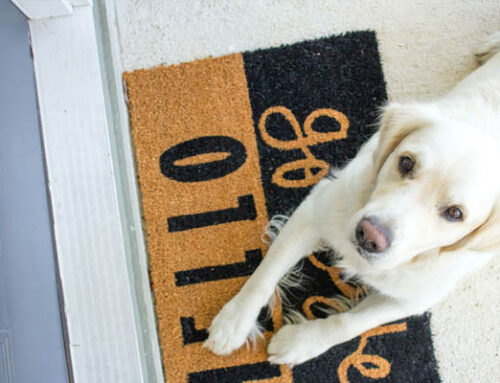Keep your dog safe with this daily habit: Threshold Management
What does Threshold Management even mean??
Threshold management is simply managing our dog’s movement through exterior doorways. I expand this to also apply to crates and getting into and out of vehicles.
Why bother with this??
# 1 reason is SAFETY!
While 99% of the time if might seem perfectly ok for your dog to bolt out into your yard as soon as the door is cracked open with absolutely no signal or release cue from the owner, it is certainly not the pattern and habit we should be building in our dog.
Remember, the more frequently a behavior is practiced the stronger and more automatic it becomes! This will generalize to most dogs that when ANY door opens, it’s GO time! And even though most times it’s perfectly ok, that small percentage of the time when it’s NOT ok to bolt out the door can end in tragedy very quickly.
This scenario is not the dog’s fault. They are simply exhibiting a behavior that you have allowed over and over again.
Let’s build a better habit!
A better way is to routinely have the dog wait, ideally offering a sit, and look to you until you give a release cue. I use “free”. OR if you have multiple dogs you can release each individually with their name.
You should implement this habit every day, every time the dog goes out an exterior door. Even if they are going into a fenced in back yard. This new habit will ultimately help your dog stay safe and prevent potentially catastrophic injuries.
Why threshold management is awesome – besides keeping your dog safe and alive
- It’s a great way to build self-control
- Doesn’t require scheduling extra “training” time because it’s already something you have to do with your dog every day, multiple times/day
- Going outside is a reward, so it makes sense they should earn that reward through good behavior
- Premack principle: The opportunity to engage in a high probability behavior (dog going through a door) can be used to reinforce your dog for participating in a lower probability behavior (sitting and offering eye contact)
How to teach waiting at the door
It’s best for this to be automatic. The hardest part of this is for you is going to be CONSISTENCY. You must commit to ONLY allowing your dog to go out an exterior door when you release them… PERIOD.
You must have a CLEAR release cue such as “free”
- stand in between the door and your dog to back them away from the door a couple feet
- being positioned in between your dog and the door in the beginning will help prevent them from making it out the door before they are released
- put your hand on the door
- first I will wait 10-15 seconds to see if the dog will offer a sit
- in the beginning if he hasn’t offered a sit, I will cue “sit”
- when he sits I say “good” and begin to open the door
- if they dog breaks the sit position I close the door and wait for him to sit again
- if you wait 20 seconds and they don’t offer a sit you can cue “sit” again
This part is important to set you and your dog up for success.
- **In the beginning I do not expect to open the door all the way.
- I start by opening the door a couple of inches, I wait for the dog to look at me, then cue free and open the door and walk out with the dog
- Every day I try to open the door a little further.
- Once you start opening the door wider it might be helpful to have the dog on leash in case he releases before he’s cued. But in the beginning I’m always between the door and the dog so I’m able to block them from going through if they release too early
*I don’t say NO when the dog makes a mistake. The most important feedback is closing the door when they release too early.
*Sometimes I might use a non-reward marker sound such as “uh-oh” or “ehh” to help the dog along but don’t overuse a bunch of added verbal cues(talking).
*Mark with “good” when they dog holds his sit. In the early stages I will sometimes reward with food too
BONUS
For dogs that are waiting for the release but then still bolt out the door running at a high speed:
- For these dogs it’s important to implement part 2 which is, after you go through the doorway re-orient back to me
- To do this you will need the dog on a leash to prevent them from running full speed out into the world
- You release the dog through the doorway, both of you walk out, once you are through the doorway, stop and wait for the dog to turn back to you. Reward with food.




Leave A Comment